Mobile World Congress: The future of technology looks a little something like this
Mobile phones that can fold several times over, USBs which connect wirelessly and hydrogen-powered motorcycles were unveiled at the world’s largest mobile technology summit.

Business
Don't miss out on the headlines from Business. Followed categories will be added to My News.
Folding phones, wireless USBs, satellite communications and hydrogen-powered motorcycles were just a handful of the new technologies on display at Mobile World Congress in Barcelona, Spain, last week.
Across seven halls, 80,000 attendees had a chance to witness new and developing technology from manufacturers world over.
Across stalls and demonstrations, many used the chance to convince the world their product was a solution to a problem, and in some cases those problems didn’t yet exist.
But it was behind the curtains where some of the best conversations were had, where the top brass held roundtables, discussions and unofficial meetings with journalists, partners and potential clients.
There was a lot to learn at MWC, and the following were some of the more fascinating developments on display.
The market for the dead is growing
A Japanese start-up is giving people a voice beyond the grave, creating clones made with artificial intelligence which are capable of reading a will and talking and interacting with family members.
Alt uses a team of around 10 engineers to create clones based on the voice recordings, letters and WhatsApp messages of a deceased person which have been handed over with consent from their family members.
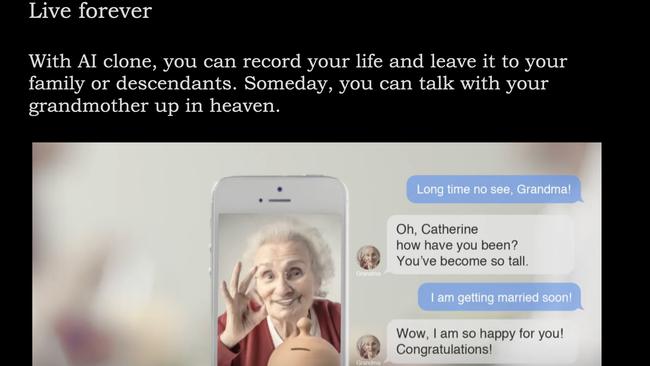
The technology was on full display at the ShowStoppers event at the Barcelona Maritime Museum.
Memori Yamato, the start-up’s chief business offer, told The Australian that Alt had already sold three clones of deceased Japanese people and that it was just about to hand over several more.
“In other words, we’ll be able to talk to our family members after they’ve died. We’ll be able to ask them questions and share memories
Alt says its clones can be used to “provide new value to society” by helping the elderly beat loneliness, by providing a way to speak with those who aren’t around.
Ms Yamato said the tech was also being used by the families of dementia patients to support the patient and their families.
“The ultimate concept of this clone is that you live forever digitally. When you die you can leave your clone to your descendants who can either 100 or 1000 years later interact with you,” she said.
Providing favours beyond the grave appears to be big business for technology giants, with AWS last year famously demonstrating it had developed the technology to have its personal assistant
Alexa read children’s bedtime stories in the voice of a deceased family member.It also appears to be a lucrative market for niche businesses, including that of Gold Coast private investigator
.It also appears to be a lucrative market for niche businesses, including that of Gold Coast private investigator
Bill Edgar who is paid thousands to read letters of the deceased at their funeral.
6G is miles away, but 5G will advance
The commercial application of 6G networks is at its best half a decade away, but a new wave of 5G is already here and by 2024, it’ll be at its peak.
Advanced 5G is the next wave of 5G in development, and it’s seeing major partnerships with the likes of Ericsson and Telstra.
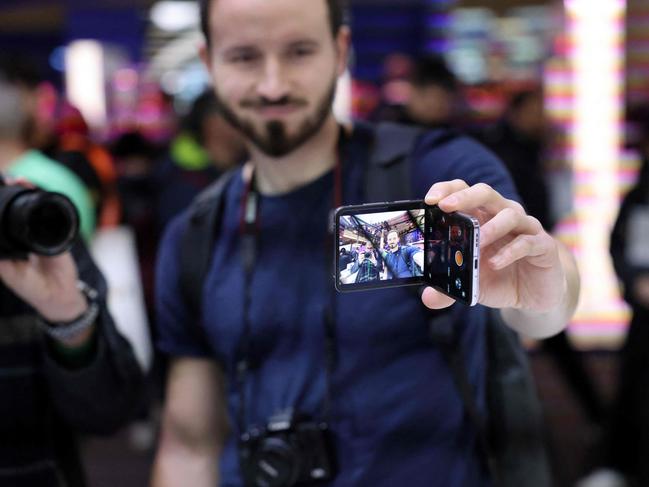
Part of this will include the
deployment of satellites to areas where networks can’t reach with towers.
The use of satellites won’t replace mobile towers, and telcos will continue to expand their networks, but in some cases satellites make more sense. That was the gist of a conversation with executives from both companies.
Telstra and Ericsson said just 30 satellites could provide global mobile phone coverage but it’s likely many more will be launched into lower earth orbit.
Both companies are lobbying for regulation of networks in space, and say no real framework exists now.
Hydrogen-powered vehicles
As some car manufacturers like Honda are only just beginning to invest in developing electric vehicles, others are already looking at the next wave of energy to use.
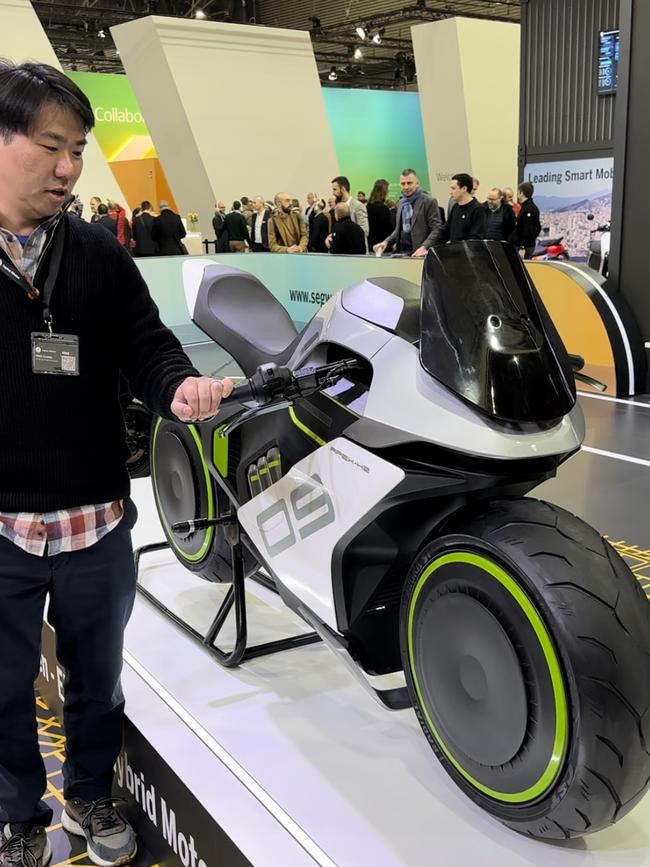
One example is hydrogen, which is being developed and tested as a means to power electric motorcycles.
Segway-Ninebot, which is known for delivering electric scooters and go-karts, is one of the first companies in the world looking to use hydrogen. Their first prototype is a futuristic looking motorcycle called the Apex 2
The company hasn’t shared a lot of information about the new motorcycle other than it will have a max speed of 150km/h, it should reach 100km/h in under four seconds and that it has a max power of 60KW.
Sim cards in everything
The world’s first 4G wireless earphones have been developed by mymanu, the UK start-up who was one of the first to develop an in-ear translation device, the CLIK +.
Rodolphe Soulard, mymanu’s marketing director, likened the technology to that of an Apple Watch, allowing the user answer calls, use voice controls and either connect to their mobile phone or use a second mobile number.

The start-up recently announced its second generation in-ear translation device, the CLIK S, which can read out a user’s notifications, make calls, send text messages and speak and write in 37 languages.
Tooz also demonstrated another item which could soon see the implementation of a sim card. The company has develoepd the world’s first smart glasses that work with prescription lenses rather than requiring the use of an insert.

Essnz Berlin connects to a user’s mobile and displays notifications on the user’s right lens. The company says the display appears about 3m in front of the user.
The glasses work with voice assistants and are able to display text messages, navigation and newsfeeds, said Dr Frank-Oliver Karutz at the tooz stand.
“I think the possibilities are endless and you’ll never have to take out your phone from your pocket again,” he said.
Instant printing still has legs
The next evolution of portable printing devices are those that can print on multiple surfaces.
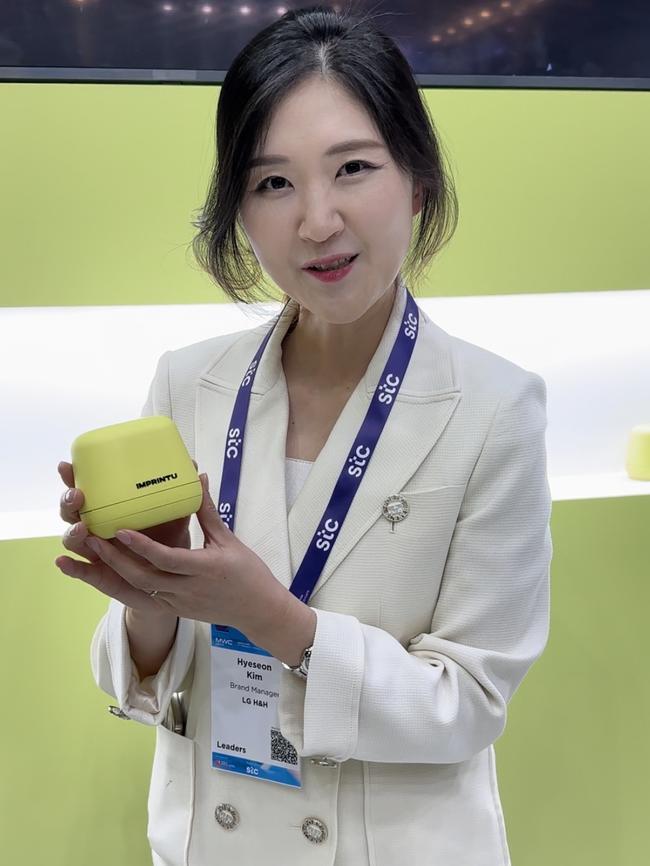
LG is behind one such device called the Imprintu, a coke can-sized device capable of printing on human skin, clothes and paper.
The ink varies in terms of its lifespan, with designs printed on skin and clothing set to disappear in a day and items printed on paper set to last forever.
The device works with a mobile app in which users can draw a design or import one.
More than meets the eye
Paper, scissors … beer bottle?
Augmented reality and mixed reality are going to be huge, at least in the space of advertising.
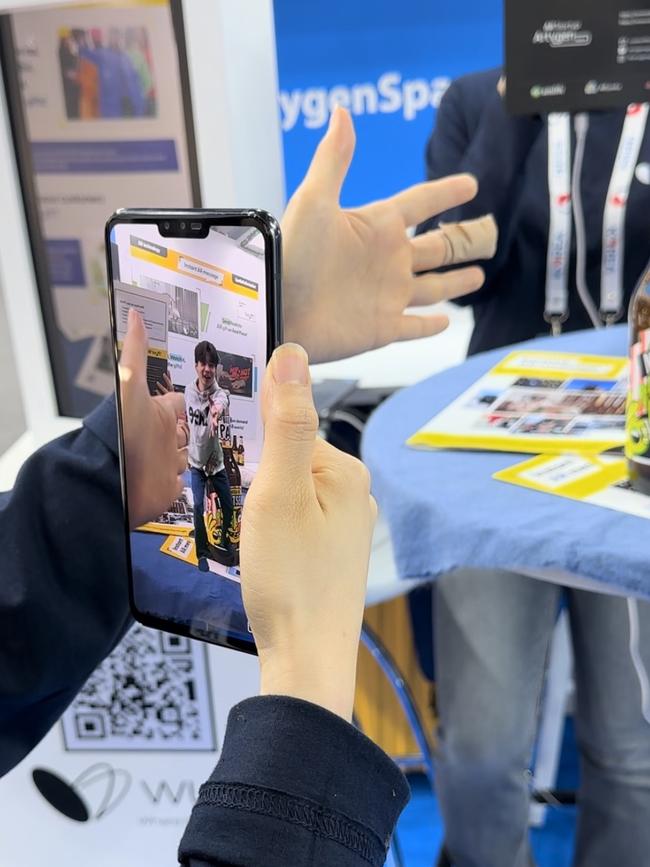
Korean AR start-up Artygen Space showed off some new technology from one of its sub branches WYFT which allows a user to scan an image and see a live display, video or interaction. Users can also play games such as paper, scissors, rock.
While the technology is limited to the WYFT mobile app, the start-up is working on the development of web use cases.
The metaverse? Strictly business
There’s been no slowing down on development in the metaverse space, just a slowing of headlines.
But the use case is increasingly moving away from what it once was; businesses appear to have stopped trying to convince consumers to get excited about the space and they’re now marketing it to each other.
Lenovo ISG, SAP, HTC and more are all raving about the space, and they believe industries including mining, manufacturing, logistics and training are all finding a common ground in the metaverse.
One of HTC’s headline announcements of MWC was that of VIVERSE, a metaverse platform which allows businesses to collaborate and develop their own space.
HTC Australia country manager Thomas Dexmier said the company was looking to build the metaverse equivalent of Zoom.
“I don’t think that it’s going to necessarily take over from something that already exists, but we think the platform can help and leverage and drive new behaviours not accessible in a 2D world,” he said.
“Our vision of the metaverse is the polar opposite to what the big power players are doing. We think it should be open so we use open standards and allow for integration with a whole bunch of different headsets and technology.”
A new way to learn
The use of virtual reality and artificial intelligence increasingly being used in the education space is not new but the use of human augmentation certainly is.
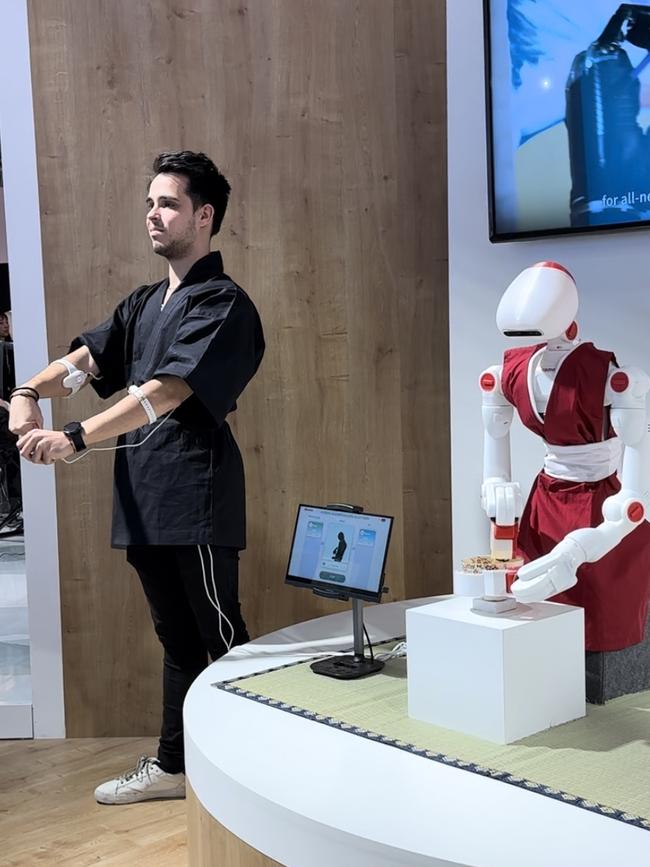
NTT Docomo, a subsidiary of Japanese telecommunications giant NTT, had the use of human augmentation (motion sharing) technology on display at MWC.
The company showed two use cases, one which allowed robots to copy human movement and the other showed how it could be used to teach people how to play instruments.
NTT Docomo believes with this technology it can “create a world where people can understand each other on a highly sensory level”.
The development of such technology is pending the development of lower latency networks such as 6G, the company said.
Flip, bend, fold and roll
In the mobile phone space, several new smart phones were introduced to the global market, four of which are set to arrive in Australia within months.
Nokia and Oppo are behind the devices set to arrive in Australia, which range from premium tier flip devices alongside low-cost mobiles which feature DIY-repair kits.
Oppo turned a lot of heads with its first entrant into the flippable smartphone market, debuting a new device to compete with Samsung’s Galaxy Z Flip 4 and Motorola’s Razr. All three mobiles retail for $1499.
The Fine N2 Flip comes complete with a 50 megapixel camera, a 4300mAh battery and dual 5G sim capability.
, a 4300mAh battery and dual 5G sim capability.
The device sports a 3.26-inch front screen – which allows the user to access certain apps and take selfies and videos – and a 6.8-inch full display when unfolded.

Oppo claims the device has been tested on up to 400,000 folds, which would last a little shy of 11 years if a user opened and closed the device 100 times per day.
Also on a roll was Motorola, and quite literally so, with a display of rolling screens which can expand on demand.
Motorola’s proof of concept sits a 4-inches at its smallest and can expand as large as 6.5-inches when a user is watching a video, needs to utilise a keyboard and or needs to utilise the camera or speaker.
The device uses a plastic OLED display, similar to what has been used in the Razr, rather than glass which allows for movement.
For Samsung, the next evolution in mobile phones are those that can bend in multiple directions.
The Korean technology giant is moving one step beyond its original folding device the Z Fold 3, and now looking to develop a device which can fold in multiple directions.
Two devices with this technology were on display at MWC, one called the Flex S, which can bend in the shape of an S, and the other the Flex G, which folds to completely cover its display.
Similar to smart flip phones, the Flex S allows the user to see notifications and access some apps whereas the Flex G completely protects its display.
Wireless USB
Dutch multinational STMicro was displaying its development of wireless technology, which ranges from chargers to more simple devices such as USBs.
The company displayed a prototype of a new wireless technology which allowed a USB to wirelessly connect to a device via a small antenna without ever having touched.
The company believes the future of connectivity doesn’t require cables, and connectivity can be done without the use of Wi-Fi or Bluetooth.
The tech giant also displayed the development of micro-sensors in everyday items such as glasses, which it said would likely be implemented in safety glasses on construction sites as a safety mechanism.
Joseph Lam travelled to Barcelona as a guest of Verizon.
Originally published as Mobile World Congress: The future of technology looks a little something like this





